Menu
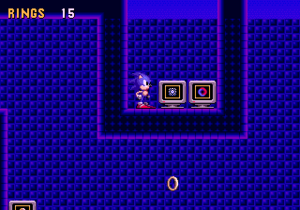
Jester's Challenge
A jester was a historical entertainer either employed to entertain a ruler or other nobility in medieval or Tudor times Read more
A jester was a historical entertainer either employed to entertain a ruler or other nobility in medieval or Tudor times or was an itinerant performer who entertained common folk at fairs and markets. Jesters in medieval times are often thought to have worn brightly coloured clothes and eccentric hats in a motley pattern and their modern counterparts usually mimic this costume. In medieval times jesters entertained with a wide variety of skills, which could include songs, music, storytelling, acrobatics, juggling, and magic. Much of the entertainment was performed in a comic style and many jesters made contemporary jokes in word or song about people or events well known to their audiences.
Ssega
2015-02-20 23:30:23
74k










Jester's Challenge
Junction
Junkbots

Klax
Klax (クラックス Kurakkusu?) is a 1989 computer puzzle game designed by Dave Akers and Mark Stephen Pierce. The object is to Read more
Klax (クラックス Kurakkusu?) is a 1989 computer puzzle game designed by Dave Akers and Mark Stephen Pierce. The object is to line up colored blocks into rows of similar colors to make them disappear, to which the object of Columns is similar. Atari Games originally released it as a coin-op follow up to Tetris, about which they were tangled in a legal dispute at the time.
Ssega
2015-02-20 23:29:13
251.1k










Klax
Lemmings

Lemmings 2 - The Tri...
Lemmings 2: The Tribes, a computer game released in 1993, is the first real sequel to the popular puzzle game Lemmings.[Read more
Lemmings 2: The Tribes, a computer game released in 1993, is the first real sequel to the popular puzzle game Lemmings.[1] As with the original, it was developed by DMA Design and published by Psygnosis. The gameplay remains mostly the same as the original game, requiring the player to lead a certain number of lemmings to their exit by giving them the appropriate "skills".
Ssega
2015-02-20 23:29:13
40.6k










Lemmings 2 - The Tribes
Mahjong Club
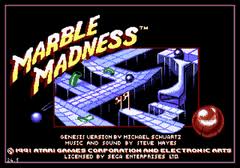
Marble Madness
Marble Madness is an arcade video game designed by Mark Cerny, and published by Atari Games in 1984. It is a platform gaRead more
Marble Madness is an arcade video game designed by Mark Cerny, and published by Atari Games in 1984. It is a platform game in which the player must guide an onscreen marble through six courses, populated with obstacles and enemies, within a time limit. The player controls the marble by using a trackball. Marble Madness is known for using innovative game technologies. It was Atari's first to use the Atari System 1 hardware and to be programmed in the C programming language. The game was also one of the first to use true stereo sound; previous games used either monaural sound or simulated stereo.
In designing the game, Cerny drew inspiration from miniature golf, racing games, and artwork by M. C. Escher. He aimed to create a game that offered a distinct experience with a unique control system. Cerny applied a minimalist approach in designing the appearance of the game's courses and enemies. Throughout development, he was frequently impeded by limitations in technology and had to forgo several design ideas.
Upon its release, Marble Madness was commercially successful, becoming a profitable arcade game. Praise among critics focused on the game's difficulty, unique visual design, and stereo soundtrack. The game was ported to numerous platforms and inspired the development of other games. A sequel was developed and planned for release in 1991, but canceled when location testing showed the game could not succeed in competition with other titles.
Ssega
2015-02-20 23:29:14
79.6k










Marble Madness
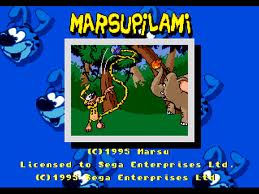
Marsupilami
Marsupilami is a fictional comic book species created by André Franquin, first published on 31 January 1952 in the FrancRead more
Marsupilami is a fictional comic book species created by André Franquin, first published on 31 January 1952 in the Franco-Belgian comics magazine Spirou. Since then it appeared regularly in the popular Belgian comic book series Spirou et Fantasio until Franquin stopped working on the series in 1968 and the character dropped out soon afterward. In the late 1980s, the Marsupilami got its own successful spin-off series of comic albums, Marsupilami, written by Greg, Yann and Dugomier and drawn by Batem, launching the publishing house Marsu Productions. Later, two animated shows featuring this character, as well as a Sega Genesis video game and a variety of other merchandise followed. The asteroid 98494 Marsupilami is named in its honour.
The name is a portmanteau of the words marsupial, Pilou-Pilou (the French name for Eugene the Jeep, a character Franquin loved as a kid) and ami, French for friend.
Marsupilami's adventures had been translated to several languages, like Dutch, German, Spanish, Portuguese and several Scandinavian languages. More than three million albums of the Marsupilami series are claimed to have been sold by Marsu Productions.
One album of Spirou and Fantasio featuring Marsupilami, number 15, was translated to English by Fantasy Flight Publishing in 1995, although it is currently out of print. Plans on releasing number 16 ended halfway through the translation process, due to bad sales. In 2007, Egmont's subsidiary Euro Books translated albums number 4, 5, 7, 8, 9, 10, 11 and 14 for the Indian market.
Ssega
2015-02-20 23:29:14
43.5k










Marsupilami
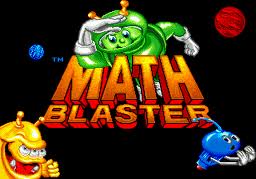
Math Blaster
Math Blaster Episode I: In Search of Spot (1994) is a product[3] in a line of educational products created by Davidson &Read more
Math Blaster Episode I: In Search of Spot (1994) is a product[3] in a line of educational products created by Davidson & Associates and a remake of their earlier New Math Blaster Plus! from 1991. Versions of the game were released for the Super Nintendo Entertainment System and Sega Genesis as simply titled Math Blaster: Episode 1.
A sequel called Math Blaster Episode II: Secret of the Lost City was released in 1995. In Search of Spot was later remade as Mega Math Blaster in 1996.
Ssega
2015-02-20 23:29:14
29.3k










Math Blaster
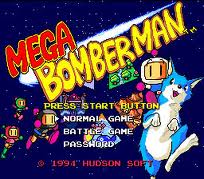
Mega Bomberman
Bomberman '94 (ボンバーマン'94 Bonbāman Nintī Fō?) is a video game from the Bomberman series which was developed and publishedRead more
Bomberman '94 (ボンバーマン'94 Bonbāman Nintī Fō?) is a video game from the Bomberman series which was developed and published by Hudson Soft for the PC Engine and released on December 10, 1993 in Japan. It was later re-developed by Westone and re-published by Sega as Mega Bomberman on the Sega Mega Drive/Genesis in 1994 in other areas. The PC Engine Bomberman '94 was later released outside of Japan through the Wii's Virtual Console and the PlayStation 3's PlayStation Network.
The game supports single-player and multi-player modes. In single player, the player navigates several levels of mazes, destroying creatures with bombs. In multi-player mode, players defeat each other with bombs.
The Mega Drive/Genesis port had some differences, such as fewer options in multi-player, and some different music (for example, Jammin' Jungle's music in the original version was reused as the first level in Super Bomberman 4, but is entirely different in the other version).
The original Bomberman '94 was first made available outside of Japan in the North American Virtual Console. The previous game, Bomberman '93, was made available instead when Bomberman '94 was released in Japan's Virtual Console.
Bomberman '94 was released on the Japanese PlayStation Network on July 15, 2009 for play on the PlayStation 3 and PlayStation Portable. It was later released in North America on June 2, 2011.
Bomberman '94 is the final HuCard title to be made and released by Hudson Soft, the original designers of the PC Engine console.
Ssega
2015-02-20 23:29:14
2.9m
















